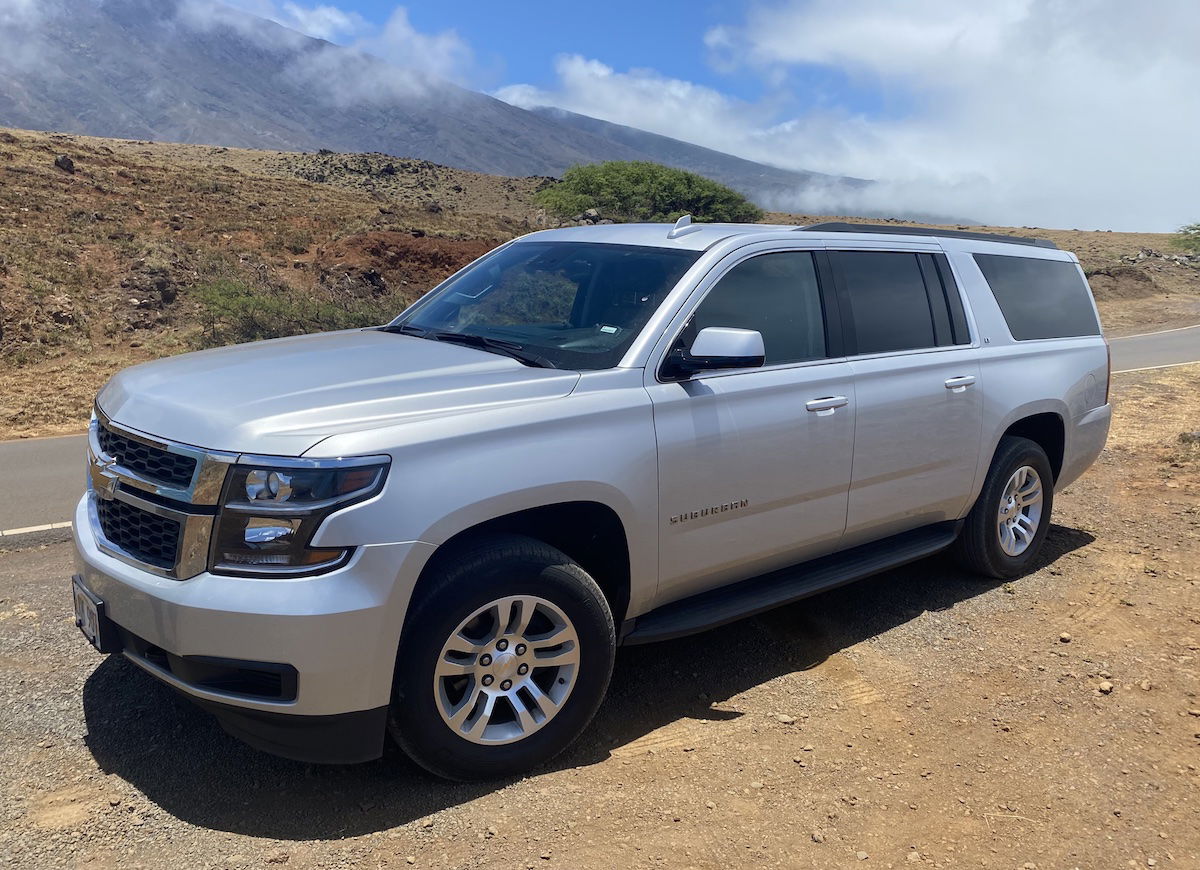

In the interest of full disclosure, OMAAT earns a referral bonus for anyone that’s approved through some of the below links. These are the best publicly available offers (terms apply) that we have found for each product or service. Opinions expressed here are the author's alone, not those of the bank, credit card issuer, airline, hotel chain, or product manufacturer/service provider, and have not been reviewed, approved or otherwise endorsed by any of these entities. Please check out our advertiser policy for further details about our partners, and thanks for your support!
Link: Apply now for the Chase Sapphire Reserve® Card
The Chase Sapphire Reserve® Card is one of the most popular premium credit cards on the market. While the card has a hefty annual fee, it’s easy to justify thanks to the great rewards structure, the annual travel credit, and the lounge access perk. If you travel frequently, and spend a decent amount on dining and travel, then this card is absolutely for you.
In this post, I wanted to provide an in-depth review of the Chase Sapphire Reserve, and also compare it to the Chase Sapphire Preferred. Is the Chase Sapphire Reserve worth it?
The Chase Sapphire Reserve is a card that has it all — a great welcome bonus, excellent perks, a rewarding points structure, valuable lounge access, and much more. The Chase Sapphire Reserve was built on the fundamentals of the Chase Sapphire Preferred® Card (review), so is the higher annual fee of the Sapphire Reserve warranted?
The Chase Sapphire Reserve is offering a welcome bonus of 60,000 Ultimate Rewards points after spending $4,000 within three months.
At an absolute minimum, if you have the Sapphire Reserve, then Ultimate Rewards points can be redeemed for 1.5 cents each toward a travel purchase, meaning that 60,000 Ultimate Rewards points will get you $900 worth of travel. As I’ll explain below, there are ways to get way more value out of the points than that.

If you’re applying for the Chase Sapphire Reserve, you can only be approved if you don’t currently have any Sapphire card, and haven’t received a new cardmember bonus on a Sapphire card in the past 48 months (this includes the Sapphire Preferred). On top of that, Chase’s general application rules apply, including the 5/24 rule, though anecdotal reports suggest this is no longer being consistently enforced.
Credit card issuers don’t publish a minimum credit score required to be approved for a card, though you do in general, need excellent credit to get approved for this card. I wouldn’t apply for the Sapphire Reserve if my credit score were under 720, and ideally, it would be over 740.
It’s possible to get approved with a lower score, and it’s also possible to be denied with a higher score. There are many factors that go into card approval, including your income, your existing relationship with Chase, and more.
Chase will often let you product change from one card to another (either personal-to-personal or business-to-business), assuming you’ve had the card for at least 12 months. For example, one strategy could be to apply for the Sapphire Preferred, use it for 12 months, and then later you can upgrade to the Sapphire Reserve, if you’d like. You’ll have to call Chase to find out the options available on your account.

The Sapphire Reserve has a $550 annual fee. Among the super-premium credit cards out there, this is in line with what we have come to expect. As I’ll explain below, in reality this card shouldn’t be costing anyone even nearly that much every year, though.
You can add authorized users to the Sapphire Reserve, and there’s a $75 fee per person. This can be well worth it, because not only do authorized users get your increased points earning rates, but they also get a Priority Pass membership (including unlimited access to Chase Sapphire Lounges), Visa Infinite benefits, and more.
The Chase Sapphire Reserve has two very well-rounded bonus categories on spending, and some other temporary and/or more niche bonus categories.
When picking a credit card, I always recommend getting one that has bonus categories that match up with your spending profile. Some cards offer bonus points on dining, gas stations, supermarkets, etc., so pick the card that works best for you.
The Sapphire Reserve offers 3x points on travel purchases globally. To me, this is the single best card when it comes to a broad travel bonus category, given all of the things that this covers. Chase’s travel category includes the following:
airlines, airports, car rental agencies (including truck, trailer, and RV), cruise ships, hotels and motels, timeshares, local and commuter transportation (including trains, buses, taxis/limos, ferries, bridges, tolls and parking), travel agencies
I value Ultimate Rewards points at ~1.7 cents each, so to me, that’s the equivalent of a 5.1% return on those purchases, which is pretty incredible.

The Sapphire Reserve offers 3x points on dining purchases globally. Chase’s dining category includes the following:
merchants whose primary business is sit-down or eat-in dining, including fast food restaurants as well as fine dining establishments.
While there are other competitive cards for dining, this is a solid bonus for this spending, as I value this at a 5.1% return.

The Sapphire Reserve offers 10x points on dining booked through Chase Sapphire Dining. This is essentially intended to be a curated dining platform for cardmembers, that includes special events, like at-home dining events, special Michelin-star restaurant reservations, and more.
As of now, I’d say this is of limited use to most, though I hope that we see this platform expanded over time because it has potential. Fortunately, you still earn 3x points on other dining purchases.
Through March 2025, the Sapphire Reserve offers 10x points on Lyft purchases. I’ve found this to be incredibly useful, as to me that’s the equivalent of a 17% return on Lyft spending, which is awesome.

The Sapphire Reserve offers 10x points on hotels and rental cars booked through the Chase Travel Portal. This doesn’t apply when you book directly, but rather only when booking a hotel or rental car through the Ultimate Rewards portal. Given that 10x points is the equivalent of a 17% return, this would make sense for some, though it is limiting.
Often hotels and car rental companies will have better prices if you book direct (and you can still earn 3x points), so personally, I don’t use this all that much.

The Sapphire Reserve offers 5x points on flights booked through the Chase Travel Portal. While earning 5x points on flights is great, it is limiting to have to book directly through Chase. Personally I prefer to book directly with airlines, since it’s then easier to change or cancel flights (and you can still earn 3x points).
Nonetheless if you’re a cardmember it’s worth keeping this in mind, since there are situations where booking through Chase could make sense.
The Sapphire Reserve has no foreign transaction fees, so this is an excellent card to use for purchases globally, since you can earn valuable rewards while not being stuck with those fees, which are sometimes 3%.
Best of all, I find that a large percentage of my purchases abroad are in the travel and dining categories, so I can avoid foreign transaction fees while earning 3x points — that’s the best of both worlds!

The Chase Sapphire Reserve earns Chase Ultimate Rewards points, which I find to be one of the most valuable flexible points currencies. Not only that, but having the Sapphire Reserve means that you can redeem your points for more than you could if you had other cards.
As I’ll explain below, there are a couple of ways that you can most efficiently redeem your Ultimate Rewards points.
Ultimate Rewards points can be redeemed toward the cost of travel purchases through the Chase Travel Portal. This means you can redeem points for all kinds of travel purchases, ranging from flights to hotels to rental cars.
The value you get per point varies based on which card you have:
In other words, if you get the Sapphire Reserve you could use your Ultimate Rewards points to book a $900 flight for 60,000 points. This allows you to redeem with no blackout dates, and avoid the complexity of frequent flyer programs.
Furthermore, when you redeem your points toward flights through the portal you can even accrue points for those flights.

My favorite way to redeem Ultimate Rewards points is to transfer them to one of the Chase Ultimate Rewards airline or hotel partners. Points transfer at a 1:1 ratio, and this is a great option if you want to book aspirational travel, like staying at a five star hotel or redeeming for first or business class travel. Just make sure you study up on this, and learn the tips & tricks of maximizing points.

The same is true for flights. International first class tickets can cost $20,000+. Meanwhile, you transfer points to Virgin Atlantic Flying Club, you could book All Nippon Airways first class for 72,500-85,000 points one-way between the United States and Japan.

The Chase Sapphire Reserve offers excellent airport lounge access perks, and this is something that has recently become even more valuable. This could be a great reason to not only pick up the card, but also to add authorized users to the card.
The Chase Sapphire Reserve comes with a Priority Pass membership, which gets you access to the world’s largest collection of independent lounges. Best of all, this membership allows you to take two guests with you at no additional cost.
Priority Pass has 1,300+ airport lounges around the world, so access to these lounges will prove useful to just about any traveler.

The Chase Sapphire Reserve gets you access to Chase Sapphire Lounges by The Club. These lounges are exceptional, among the best credit card lounges out there. While the lounges in the United States can be accessed once annually for all Priority Pass members, those with a Priority Pass membership through the Chase Sapphire Reserve receive unlimited visits annually, with the ability to bring two guests.
This new network of lounges is a huge reason to consider picking up this card, as these lounges really are a treat, especially the ones at New York LaGuardia and Boston Logan.

What really sets the Chase Sapphire Reserve apart is the incredible benefits that it offers. These benefits help offset the annual fee, and for many will more than justify it, not even taking into account the welcome bonus, 3x points on spending, and more. The card offers all kinds of perks that will make it worthwhile.
The Sapphire Reserve offers an incredible $300 annual travel credit. While quite a few credit cards offer credits, there are typically lots of strings attached. That’s not the case with the Sapphire Reserve.
There’s no registration required, and any purchases that are coded as travel will be reimbursed automatically. This could include flights, Uber rides, taxis, train tickets, hotels, and more. You don’t have to use the entire credit in one transaction but rather can use it across as many transactions as are needed.
The $300 annual travel credit doesn’t reset with the calendar year, but rather resets each account anniversary year. This would be based on 12 billing cycles following when you receive the card.
When you go to the Ultimate Rewards homepage and log into your account, click on the “Your Dashboard” section, at the top right of the page. There you should see a section that shows how much of your spending toward the credit you’ve completed, and it will also show when your anniversary year resets, which would be when you get your next credit.
While the Sapphire Reserve has a $550 annual fee, in reality, this card shouldn’t be costing anyone more than $250 per year, by the time you factor in the $300 annual travel credit.
Anyone who gets this card should spend at least $300 per year on travel. If you don’t, this probably isn’t the card for you, given that it offers travel rewards. That’s what has made this card so accessible for many — while you’re paying a much higher fee upfront, the card should only cost you at most $250 per year.
Not only can you receive 10x points for Lyft purchases, but the Chase Sapphire Reserve also offers a Lyft Pink All Access membership. You must activate this by December 31, 2024, and once activated, it’s valid for two years. This ordinarily retails for $199 per year, so it’s potentially a pretty significant value.
Lyft Pink All Access offers perks like free priority pickup upgrades, discounts on select rides, cancellation forgiveness, complimentary classic bike rides, ebike and scooter unlocks, and more.

The Chase Sapphire Reserve offers a DoorDash DashPass membership. The membership is valid for at least 1 year when you activate by December 31, 2027 (full details).
With DoorDash DashPass, you pay a $0 delivery fee when ordering from thousands of restaurants and grocery stores nationwide. Just place an order totaling at least $12 from an eligible restaurant or $25 from an eligible grocery store, and you’ll get a $0 delivery fee and a reduced service fee.

The Chase Sapphire Reserve offers a couple of valuable perks with Instacart, for those who who enroll.
First of all, the Chase Sapphire Reserve offers a 12 month Instacart+ membership, which comes with perks like waived delivery fees on most orders of over $35, reduced service fees, 5% back on eligible pickup orders, and more.
On top of that, through July 31, 2024, the Chase Sapphire Reserve offers a $15 monthly Instacart credit. This expires after three months, meaning you can “bank” them and could use a single $45 credit every three months, if you wanted to.

The Chase Sapphire Reserve offers a Global Entry, NEXUS, or TSA PreCheck credit once every four years. Just charge the membership fee to your card, and it will automatically be reimbursed. It doesn’t matter who the fee is being paid for, as long as you charge it to your eligible card.
If you are going to take advantage of this perk, I’d highly recommend registering for Global Entry over TSA PreCheck. TSA PreCheck gets you expedited US airport security screening, while Global Entry gets you expedited US immigration clearance.
Why should you register for Global Entry and not Pre-Check? Because Global Entry also comes with TSA PreCheck, while the inverse isn’t true (signing up for TSA PreCheck doesn’t get you Global Entry). NEXUS is a program that is particularly useful if you’re doing regular land crossings at a US/Canada border.

Those with the Chase Sapphire Reserve get access to The Luxury Hotel & Resort Collection, offering additional benefits at 1,000+ luxury hotels around the world. When booking through the program at an eligible rate you receive breakfast for two, complimentary Wi-Fi, a room upgrade if available, early check-in and late check-out if available, and a special property amenity.

The Chase Sapphire Reserve offers primary collision damage waiver coverage against damage up to the cost of most rental car vehicles provided you decline the CDW coverage offered by the rental agency. This includes economy through luxury class vehicles, vans that carry fewer than seven passengers, and SUVs. You’ll want to check your cardmember agreement for full details.
The Sapphire Reserve is a Visa Infinite Card, so comes with all kinds of great travel and purchase protection.
What’s especially awesome is that you earn triple points for travel with the card, so you can put your travel purchases on this card, and then automatically be covered with the benefits. Airline mileage award tickets qualify for this benefit as well, assuming you put the taxes on the Reserve Card.
Here are the basic details of the coverage, though you’ll want to consult the cardmember agreement for all the details:

The Sapphire Reserve is the evolution of the Sapphire Preferred, so which of the two cards is better? Here’s a comparison of a few factors:
Long term I think the Sapphire Reserve could be worth it if you value lounge access. However, I think for many people, the Sapphire Preferred may be more compelling overall, and a better value — the card has some better bonus categories on spending (plus the 10% anniversary points bonus), and a $50 hotel credit, all with a lower annual fee.
The Amex Platinum is a card I have as well, and I value it immensely. But I also don’t think it’s as well-rounded.
The card is potentially better for lounge access — it offers Amex Centurion Lounge access, Delta Sky Club access, and a Priority Pass membership (with additional restrictions). It also offers a lot of credits, from a $240 annual digital entertainment credit, to a $200 annual airline fee credit, to a $200 annual hotel credit, to a $200 annual Uber credit, to a $199 annual CLEAR Plus credit, to a $100 annual Saks credit. (Enrollment is required for select benefits)
Personally, I think the Sapphire Reserve is more well-rounded, and if you’re just going to get one of those two cards, that’s the one I’d choose. However, I also think both cards could be worth having.

The Capital One Venture X Rewards Credit Card (review) (Rates & Fees) is another popular premium credit card. The card has a $395 annual fee, which is much lower than than you’ll find on other premium cards, and it offers a ton of value.
The value here is simply incredible, and I think this card is a no-brainer for anyone who is eligible. It’s an especially great card for families.

The Chase Sapphire Reserve has revolutionized the premium credit card market over the past several years, and continues to be extremely compelling. The card offers a $300 annual travel credit, 3x points on dining and travel, the ability to redeem points for 1.5 cents each, a Priority Pass membership, access to Chase Sapphire Lounges, and much more.
The following links will direct you to the rates and fees for mentioned American Express Cards. These include: The Platinum Card® from American Express (Rates & Fees).
Upon enrollment, accessible through the Capital One website or mobile app, eligible cardholders will remain at upgraded status level through December 31, 2024. Please note, enrolling through the normal Hertz Gold Plus Rewards enrollment process (e.g. at Hertz.com) will not automatically detect a cardholder as being eligible for the program and cardholders will not be automatically upgraded to the applicable status tier. Additional terms apply.
For Capital One products listed on this page, some of the above benefits are provided by Visa® or Mastercard® and may vary by product. See the respective Guide to Benefits for details, as terms and exclusions apply.